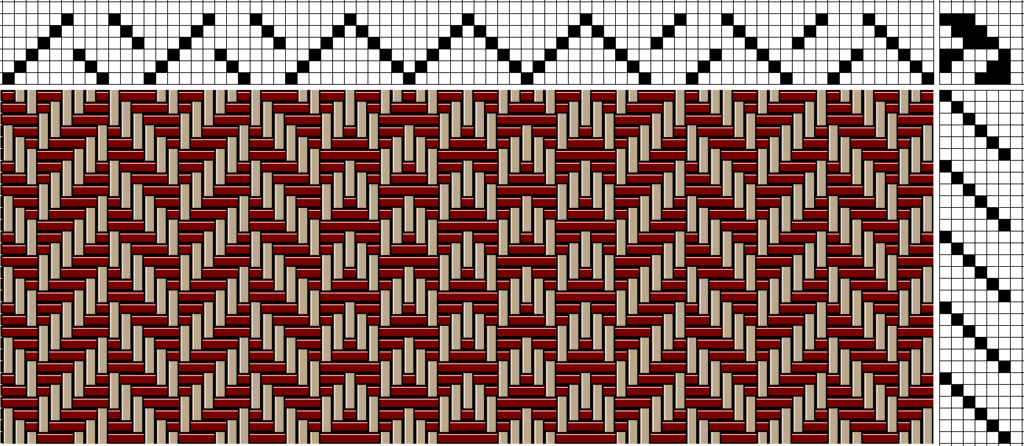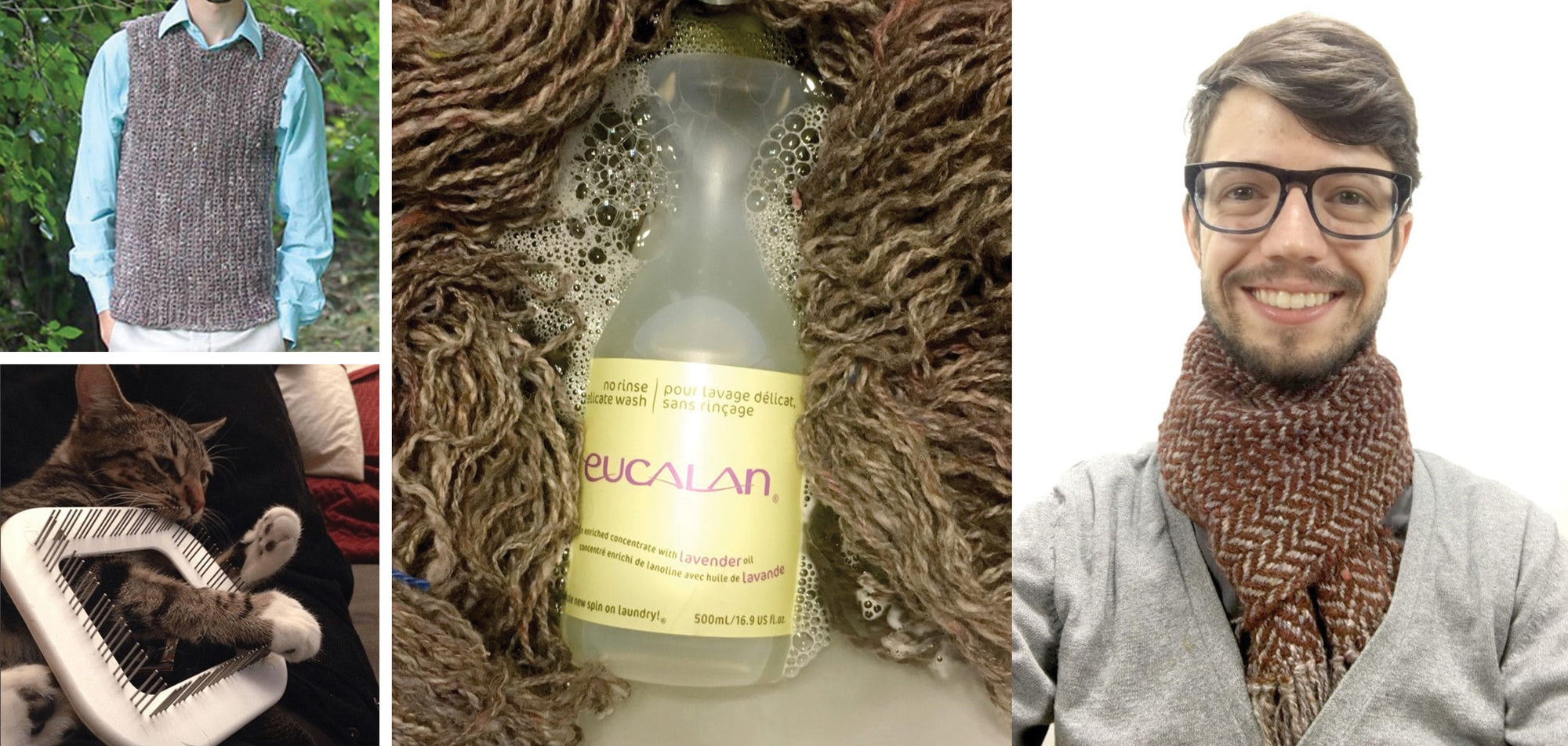How to Reclaim Handspun Yarn
By Benjamin Krudwig
A few years ago, just as I was learning to spin, my wife went on a road trip to South Dakota. When they returned, they brought back alpaca roving and buffalo down. They gave me about 10 ounces of alpaca, 2 ounces in 5 different natural shades, and a fair amount of buffalo down that was dyed multiple colors. Knowing that I wanted to use all of it in a special project, I started carding it all together using my Schacht 112 PSI curved hand carders.
After who knows how many rounds of splitting little batts and re-carding them together, I had a fairly homogeneous tweed mixture. I spun this up into singles, albeit a little uneven (this was still early in my spinning days) and then plied them into a 2-ply yarn. The neps of buffalo incorporated beautifully into the grey heathered alpaca.

I crocheted a warm and cozy sweater vest that has been a staple of my wardrobe for the past five years (see the photo above). I've worn to many family functions and fiber festivals and I always get a few comments. Recently, thanks to a cold snap, I pulled the vest out of the closet and discovered to my horror that a large chunk had been eaten out of it. Thanks cat... (shown dismantling a Zoom Loom above—does that look like the face of a troublemaker?)
After the shock wore off, I knew that I had to do something to salvage my handspun yarn. I thought about using some extra yarn that I had in my stash to mend the hole, but it was too large and unstable to fix. I decided that the only thing to do was rip it out. I found the seams, undid them, and started raveling. I wound the yarn into skeins and soaked them in Eucalan, a no-rinse wool wash that also has natural anti-moth (unfortunately not anti-cat) properties, and then hung the skeins up to dry. This relaxed the yarn and removed the kinks.
Our theme this month is "What was old is new again," so I decided that now was the time to resurrect the yarn and settled on a woven scarf.
Before starting this project, I needed to know how much yarn I had. According to my Ultra Umbrella Swift with Counter, I yielded 506 yards of yarn. I checked this length on a McMorran Yarn Balance to see how accurate it was with handspun.

The process of using the balance is to place a length of yarn on the hook end of the balance, and cut small pieces off until the balance is level. My science background told me that for a more accurate measurement I needed to take multiple samples from different sections of my yarn. I cut five samples on the McMorran balance and ended up getting five different measurements ranging from 550 yards per pound to 1150 ypp. I took the average of my five measurements and got 755 ypp. This meant that I should have had 488 yards of yarn from 10.5 ounces of yarn. Not too far off! The difference could possibly be accounted for by the fact that my yarn wasn't 100% consistent. It's also possible that I could have rounded up or down when measuring on my swift.
To breathe even more life into my yarn, I decided to dye half of the yardage a rusty red using acid dyes for a good contrast between warp and weft.
I chose a traditional herringbone weave which is similar to a point twill. This structure looks much like the bones of a herring fish, hence the name. According to some sources, the herringbone pattern was first used in the roadways and walls of the Roman Empire, but wasn't used in fabric until later in ancient Italy. However, since I am a compulsive fiddler, I adjusted my draft to create a different pattern running down the center of my warp, bordered by the more traditional herringbone.
I warped my 8 harness Baby Wolf Loom with the undyed yarn and the used the dyed yarn for weft. I am so happy with how everything turned out! Needless to say, I will be sure to keep this well out of reach from our naughty cats.
This project taught me that there is no reason to discard something that may be deemed ruined. I used dye and weaving tools to completely transform and breathe new life into this yarn. I expect to get years of wear out of this scarf. What a journey it's been.
Project Specs
Finished size: 7" wide by 74" long including 7" fringe on each end
Weave structure: 3x3 broken twill
Number of warp ends: 81, including 2 floating selvedges
Total warp length: 3 yards, includes take-up and loom waste
EPI: 10
PPI: 10
What You'll Need
-
Warp yarn: about 250 yds handspun yarn, sport to worsted weight, natural grey
-
Weft yarn: about 200 yards handspun yarn, sport to worsted weight, rust
-
8-shaft loom, at least 9” weaving width
-
10 dent reed
Materials
Equipment
Directions
Warp the loom according to the weaving draft (floating selvedges aren’t shown).

Weave following the treadling pattern for about 2 yards.
Finishing: I knotted my fringe in groups of 4 threads, and wet finished in Eucalan wool wash and hot water.

